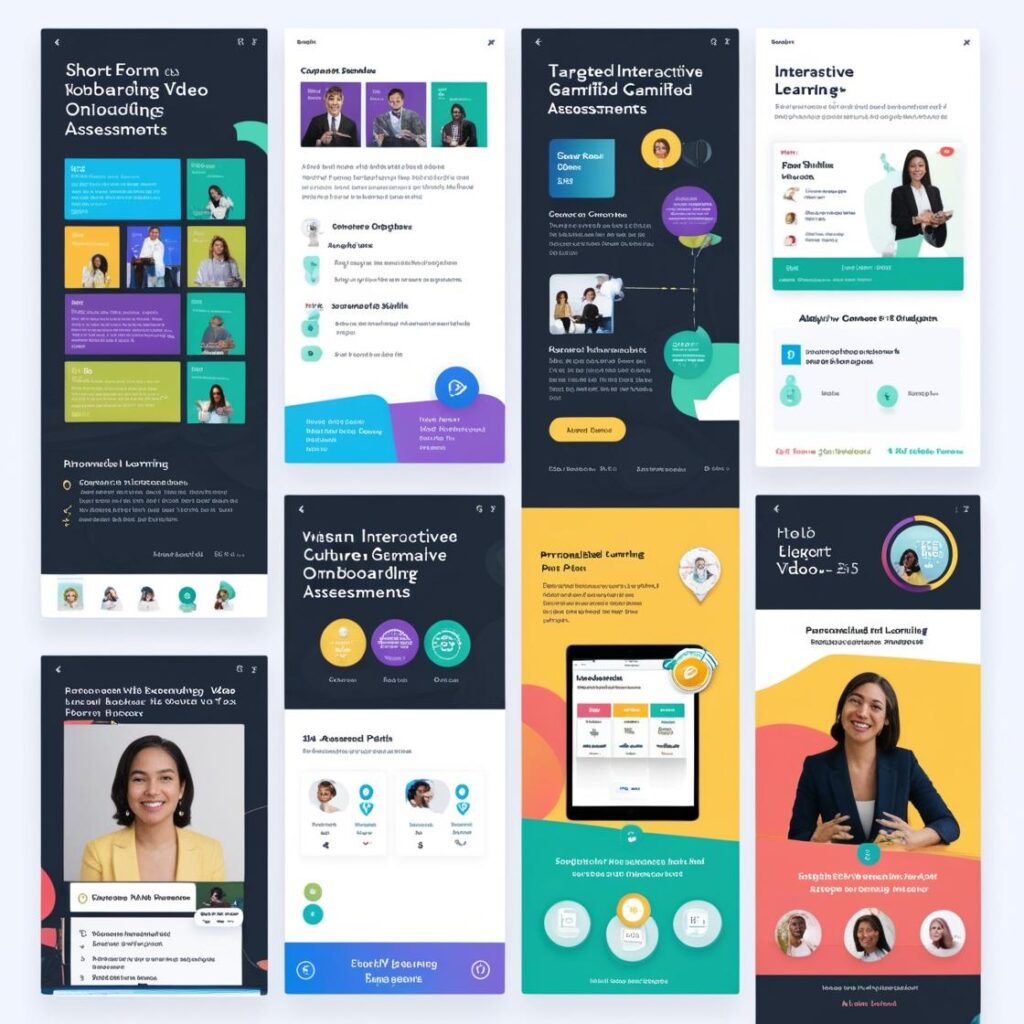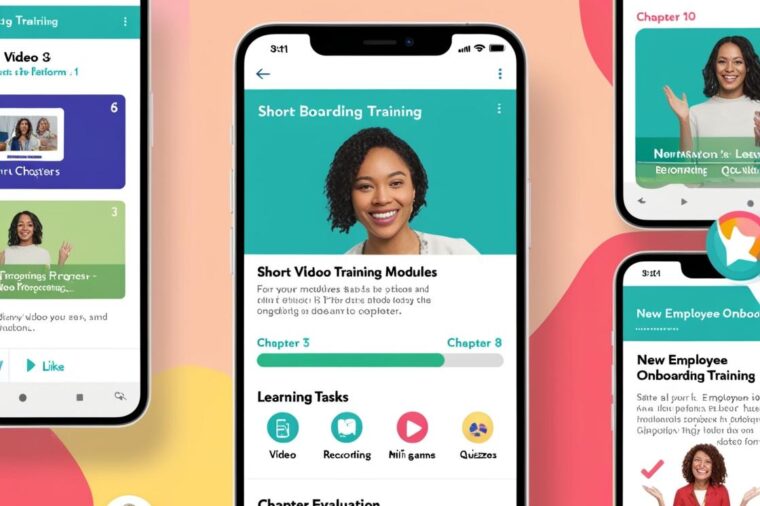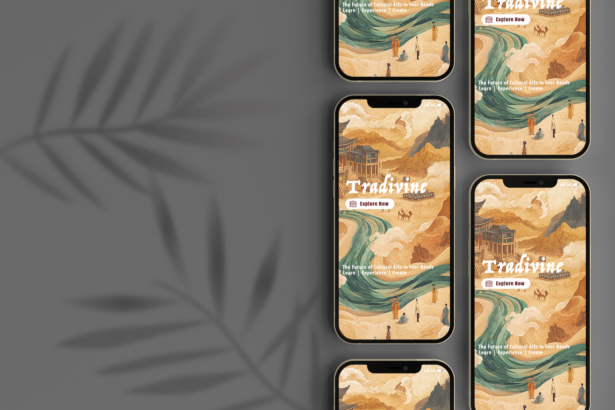In the modern corporate environment, onboarding training for new employees is a critical step in building a strong company culture, enhancing work efficiency, and fostering a sense of belonging. However, traditional training methods are often time-consuming, dull, and lack interactivity, making it difficult to engage new employees effectively. To address this issue, we have designed an innovative internal training software that adopts a TikTok-style short video format, presenting training content in a lighthearted, engaging, and bite-sized manner. This software is intended to utilize employees’ spare time to complete training, allowing them to learn about company culture, team information, and role expectations anytime, anywhere through short videos. Through video interaction, gamified assessments, and scenario simulations, new employees can integrate more efficiently into the team and build professional confidence.

1. Design Principles
- User-Centered Design and Educational Equity: In designing this short-video training project, I drew from Donald Norman’s principle of “starting from the user’s perspective.” My goal was to create a simple and accessible platform where employees could learn essential content during short breaks. However, I also realized that the TikTok-style format could lead to fragmented learning, which might prevent a full understanding of concepts. To address this, I focused on structuring content cohesively, creating continuity between video segments. This approach ensures that the training is effective for employees from diverse backgrounds, promoting educational equity in design.
- Balancing Flexibility with Linear Requirements: Many companies expect new employees to complete training quickly, so they can start contributing as soon as possible. In response, I implemented a modular content structure that allows employees to complete training in small chunks during downtime, without sacrificing continuity. This method adapts to employees’ needs to learn on-the-go while meeting companies’ efficiency expectations, helping employees master key skills in a limited timeframe.
- Rapid Prototyping and Feedback Loops: Inspired by Monica Tracey’s emphasis on “rapid prototyping and feedback,” I used tools like Figma to create prototypes, gather feedback, and continually iterate. For instance, during video module design, I adjusted video lengths and interactive features based on user testing to ensure that the content wasn’t overly superficial, thus enhancing the learning outcomes. Tracey’s iterative design approach encouraged me to focus on user feedback, ensuring the design meets both learning objectives and user experience standards.
2. Course Takeaways
- Integrating Design Thinking and Learning Methods: In the PCE course, I learned that learning design isn’t just about applying techniques; it’s about effectively combining theories and methodologies. Duckworth’s concept of “guiding students to have their own ‘wonderful ideas’” helped me realize the importance of giving employees a degree of autonomy, so they can actively participate and explore. In my video module design, I moved beyond pure information delivery to include reflective assessments (such as video responses and question-sharing), creating a more interactive learning environment.
- Navigating Complex “Wicked Problems”: Buchanan’s idea of “wicked problems” in design reshaped how I view uncertainty in design. I initially struggled with how to structure content to create coherence, but through exploration and discussions, I realized that training should not only be “simple and intuitive” but also help employees form a systematic understanding. This led me to use a more structured approach, ensuring each video module connected with the next, so that employees could integrate fragmented information into a cohesive knowledge base.
- Ethics and Long-Term Impact in Design: During the project, I also became aware of the need to consider long-term impact beyond immediate engagement. Parvin’s insights on the “short-sighted effects” of short videos reminded me that this format might lead employees to focus on fragmented details and neglect deeper thinking. I realized that incorporating longer-term evaluations (such as end-of-module reflections) was necessary to ensure employees achieved a more comprehensive understanding, even beyond the brief video format.



